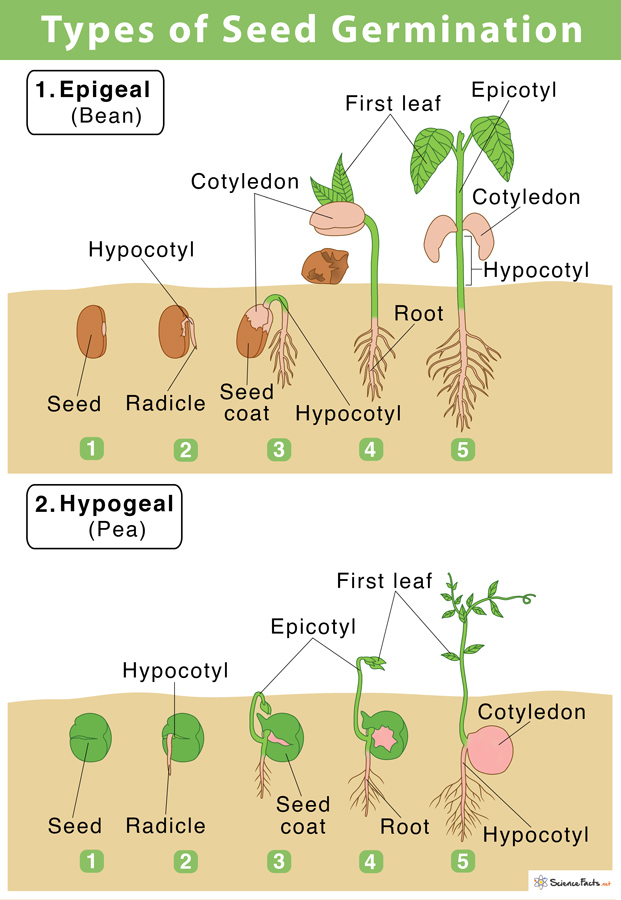
Seed Germination Definition, Steps, & Factors Affecting Them
After reading this article we will learn about: 1. Definition of Seed 2. Structure of Seed. Definition of Seed: A true seed is defined as a fertilized mature ovule that possesses embryonic plant, stored material, and a protective coat or coats. Seed is the reproductive structure characteristic of all phanerogams.

Seed Germination Process, Stages of Germination, Factors
For a plant to grow germination, is a significant process. The seeds get active, gradually its plumule and radicle develop. Thus, giving birth to a sapling. To understand the whole process, the students must learn about the anatomy of a seed. For that, they can use a seed diagram.
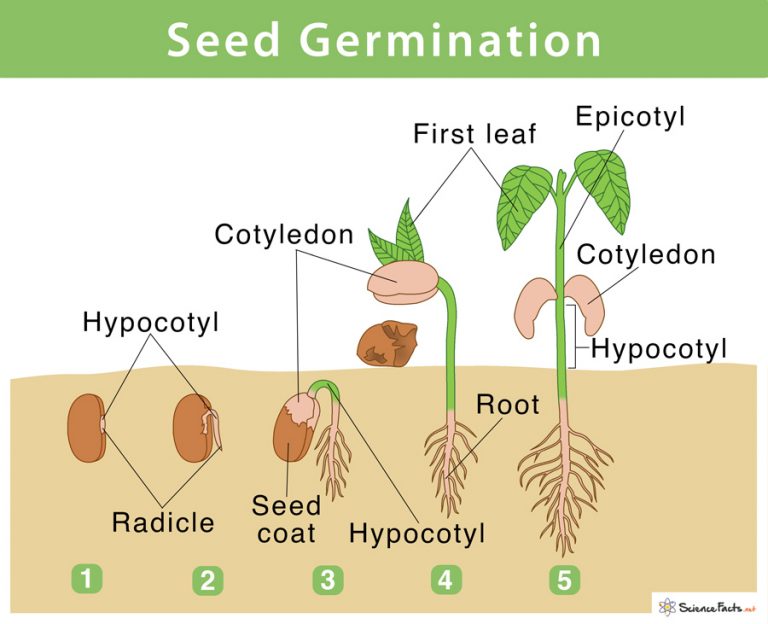
Seed Germination Definition, Steps, & Factors Affecting Them
Endospermic seed structure (Eudicots): Brassicaceae - Lepidium sativum as model system in seed biology : In mature seeds of Lepidium sativum (garden cress) the embryo is surrounded by 1-2 cell layers of endosperm. FA2-type seed. We found that Lepidium seeds exhibit, as tobacco, a two-step germination process with distinct testa rupture and endosperm rupture.

Anatomy Of A Bean Seed Stock Illustration Download Image Now iStock
germ tube appressorium (Show more) See all related content → germination, the sprouting of a seed, spore, or other reproductive body, usually after a period of dormancy. The absorption of water, the passage of time, chilling, warming, oxygen availability, and light exposure may all operate in initiating the process.

110 Seed dispersal Biology Notes for IGCSE 2014
The ovule wall, which is made up of maternal cells called integument tissue, matures to become the seed coat. An example of a seed coat is the red or tan "skin" on a peanut. The ovary wall (note the important difference between the words "ovule" and "ovary") matures into the protective cover called the pericarp.

Structure of Ovule/Seed Plant science, Biology plants, Plant lessons
The following are some important structures of a bean seed: Testa - The term testa refers to the outermost protective layer, which is often extremely thin but resilient. Water can penetrate the testa's surface through a microscopic opening known as the micropyle and begin the germination process, thus breaking the latent period. Cotyledons.
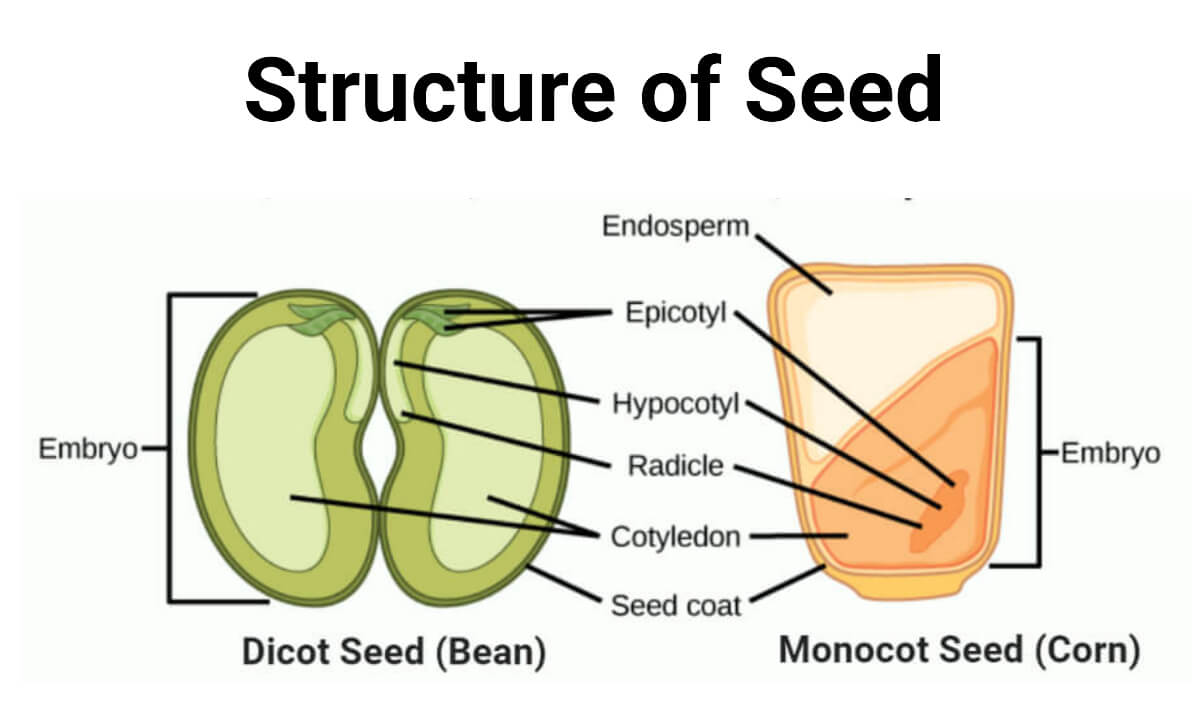
Seed Definition, Types, Structure, Development, Dispersal, Uses
Essentially, a seed consists of a miniature undeveloped plant (the embryo), which, alone or in the company of stored food for its early development after germination, is surrounded by a protective coat (the testa).

Seed Germination Process, Stages of Germination, Factors
7.5 The Origin of Trees and Seeds from Introduction to Botany by Alexey Shipunov (public domain) 2.6.1: Introduction to Seed Plants is shared under a not declared license and was authored, remixed, and/or curated by LibreTexts. Seeds represent one of the most important innovations in plant evolution: a protected, nutrient-supplied embryo with.

7th Grade Science 20152016 Parts of a Seed and Growing Plant
It consists of three parts: a plumule that forms the shoot, a hypocotyl that forms the stem, and a radicle that forms the root. Structures of dicot and monocot seeds - LibreTexts (CC BY-NC-SA) The seed coat consists of one (in monocots) or more (in dicots) protective layers that encase the seed.
.PNG)
Reproduction in Flowering Plants Presentation Biology
6 days ago The perfect follow-up for a dissection! Learn about the parts of a seed and draw your own diagram.
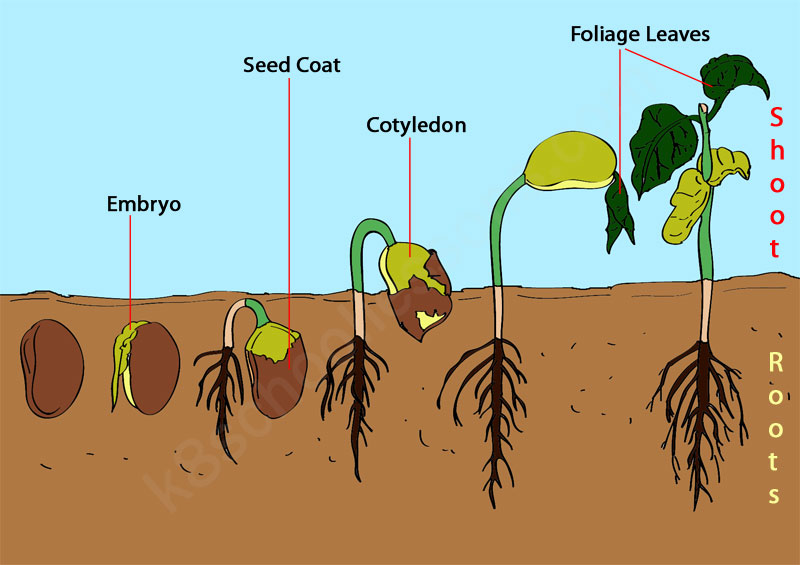
Germination What is Germination? Seed Germination for Kids
Anatomy of Flowering Plants The Seed The seed in a plant is the part that develops from the ovules after fertilization. They are enclosed in the fruit which develops from the fertilized ovary. The seeds are formed as a result of sexual reproduction and contain the young embryo which can develop into a new plant. Let's learn more. Suggested Videos
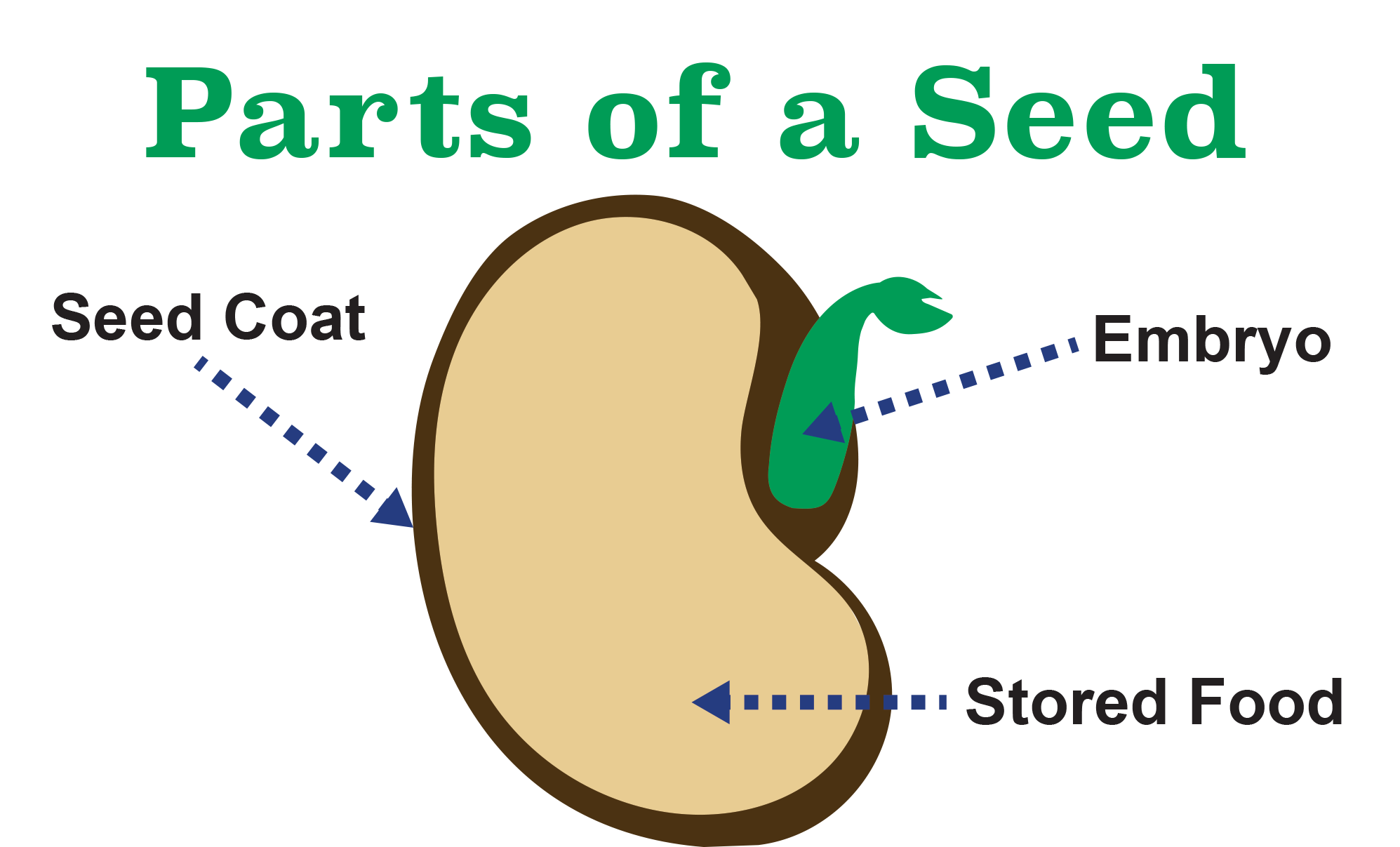
Plant the Seed
Biology Article Parts Of A Seed Parts Of A Seed A seed is an important part of a flowering plant. They give rise to a new plant. They may be of different shapes, colours and sizes. They may be round, wrinkled, winged or hairy. They are in a dormant condition until they receive adequate sunlight, water, and soil.

مكونات البذرة التي تكون نباتًا .. وأمثلة عليها المرسال
A typical diagram of a plant body consists of three parts: 1) roots, 2) stems, and 3) leaves, each having specialized functions. Apart from these basic parts, a flowering plant also contains 4) flowers and 5) fruits. The root system covers the underground parts of a plant, which include the roots, tubers, and rhizomes, whereas the shoot system.
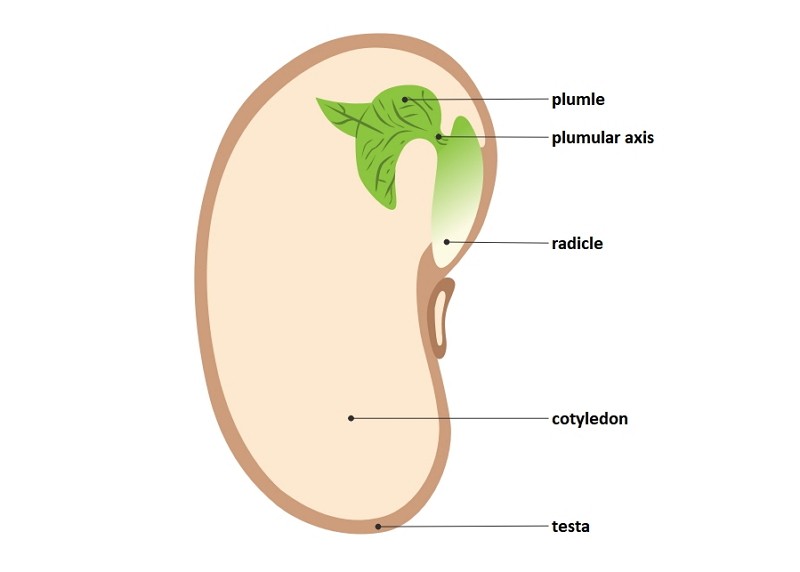
A Guide to Understand Seed with Diagram EdrawMax Online
Seed Anatomy Seeing Seeds Close-up - These pictures are of a pea seed Here you can see, I've removed the seed coat and split the seed in half. One half has the embryo and some of the stored food, and the other half holds the rest of the stored food. This picture is of the half of the seed that has the embryo.
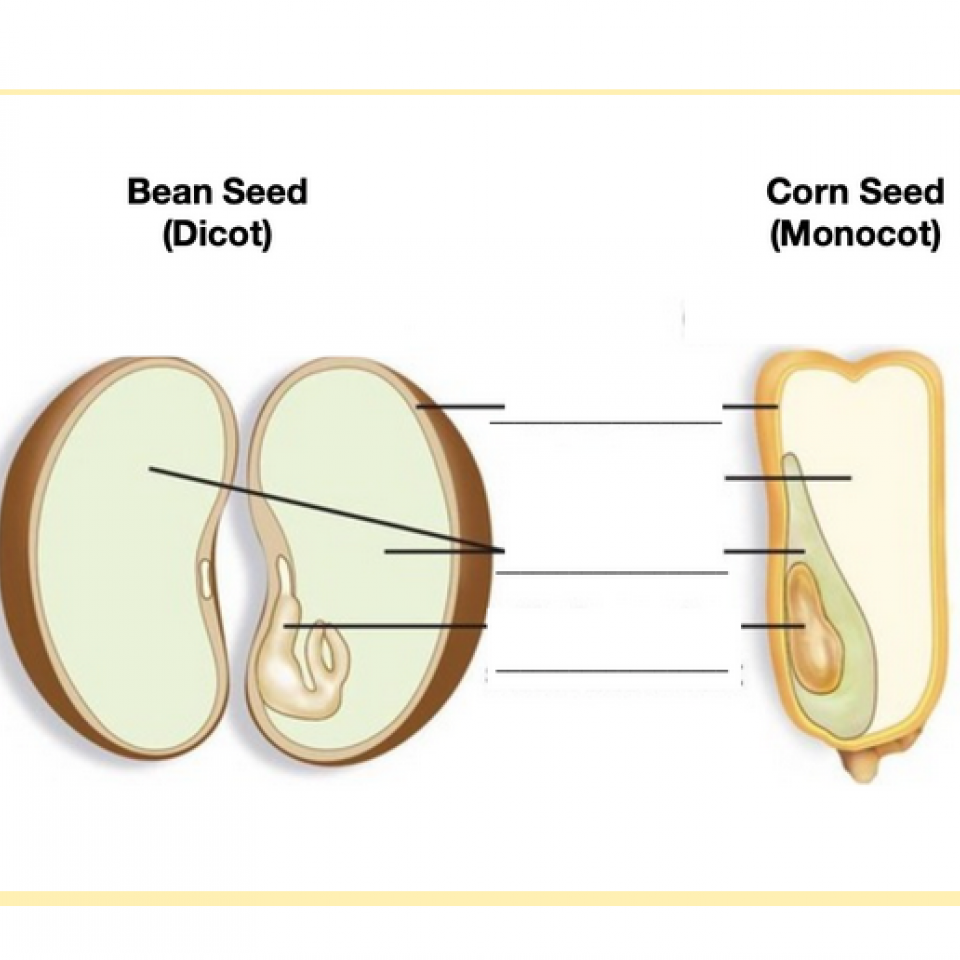
Seed Parts and Sprouting Starts The Edible Schoolyard Project
Seed Growth. In angiosperms, the process of seed development begins with double fertilization and involves the fusion of the egg and sperm nuclei into a zygote. The second part of this process is the fusion of the polar nuclei with a second sperm cell nucleus, thus forming a primary endosperm. Right after fertilization, the zygote is mostly.

Seed germination cross section stages vector illustration diagram Biology plants, Seed
Diagram of seed | Parts Of A Seed Drawing | How To Draw Parts Of A Seed | Bean Seed (Dicot) DiagramSubscribe for More videos: https://www.youtube.com/user/k.